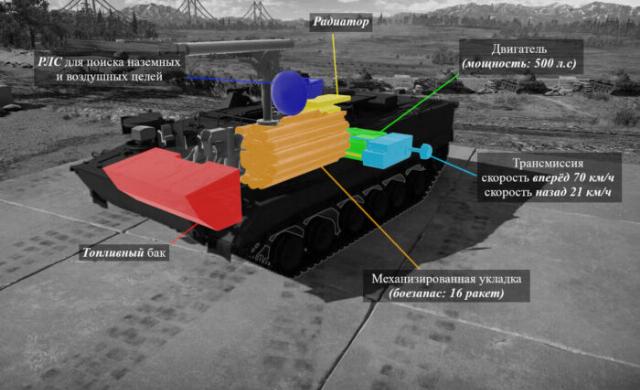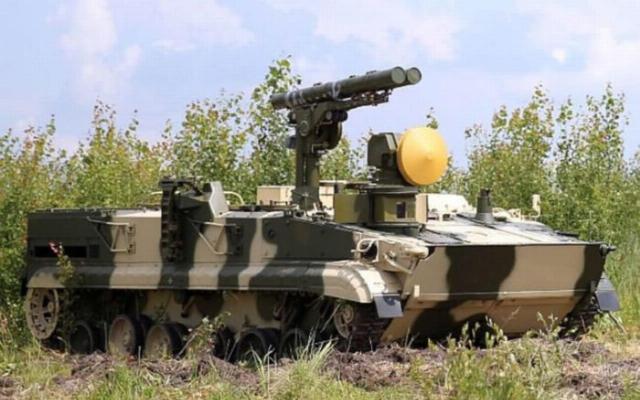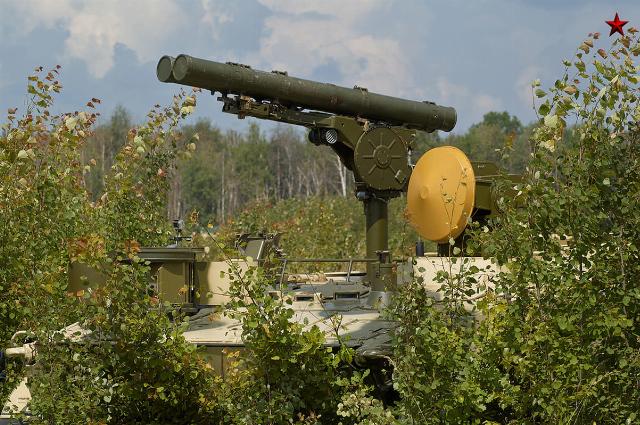To date, Chinese and Western military experts are reliably aware of the use of heavy anti-tank missiles "Chrysanthemum-C" 9K123 (according to the NATO classification AT-15 Springer) from the 8th Guards Combined Arms Army (Rostov region, Novocherkassk) of the Southern Front since the beginning of May 2022 as part of a Special military operation to denazify and demilitarize Ukraine Military District.
According to information from open and specialized sources, these anti-tank missile systems were also deployed by units of the Western Military District to the areas of the SVO. In total, the Ground Forces of the Armed Forces of the Russian Federation have at least 50 ATGMs "Chrysanthemum-S". In addition, these complexes have been put into service by some units of the coastal missile forces and artillery of the Russian Navy.
With regard to this PTCR, it is reported that the development work at JSC "Scientific and Production Corporation "KB of Mechanical Engineering" (Kolomna) began in the 80s of the last century. The complex was planned to be put into service in the 90s. The product was first demonstrated in 1996, however, for various reasons, the test program turned out to be seriously delayed, and the complex entered service only in 2014 and was presented to the attention of specialists of the Armed Forces of the SCO member states at the Peace Mission 2014 exercises.

ATGM 9K123 "Chrysanthemum-S". The layout of the combat vehicle
The 9K123 ATGM was created on the basis of the 9P157-2 combat vehicle (in fact, it is the body, engine and chassis from the BMP-3), which houses a mechanized launcher that provides sequential launch of supersonic anti-tank guided missiles of two types:
- 9M123-2 with tandem armor-piercing warhead (warhead);
- 9M123-F2 with thermobaric warhead.
These missiles are modified versions of ammunition, which have increased armor penetration (up to 1400 mm of homogeneous armor) and thermobaric effect (used to destroy long–term firing points). The 9M123-F2 missile had an armor penetration of 1100 mm.
It is reliably known that 9M123-2 or 9M123F-2 anti-tank missiles develop a speed of MACH 1.3, i.e. they fly a distance of 6000 m in 15 seconds. In fact, enemy tanks located at a range of 3,000 m or less do not have the opportunity to get out of the fire of the Chrysanthemum-S ATGM.
The ammunition in question can hit ground targets moving at speeds up to 60 km/h and low-flying targets (helicopters) with speeds up to 340 km/h.

ATGM "Chrysanthemum-C" in firing position
Foreign experts pay attention to the high recharge rate of the launcher – 15 seconds, i.e. one 9K123 combat vehicle is capable of firing 4 ATGMs in one minute and is guaranteed to hit 4 targets. According to available data, the minimum accuracy of a single launch is 80%.
At the same time, in practice, even when the enemy sets up a smoke screen, the accuracy of the defeat is 95%, which became possible thanks to the guidance radar station, which allows you to fire in all weather conditions. The ATGM has a semi-active laser guidance system, which is almost impossible to disable by external influence.
Known facts of the use of this ATGM:
- On May 11, 2022, during the fighting in the Zaporozhye region;
- On June 28, 2022, a night battle in one of the districts of the DPR;
- On January 31, 2023, in the Kupyansk area, the southern part of the DPR.
With a high degree of probability, the crews of the complex use quadrocopters to conduct reconnaissance and surveillance of the battlefield, which increases the effectiveness of ATGM use.
It should be noted that experts in the field of combat use of armored vehicles of the Armed Forces of NATO member countries are extremely concerned about the presence of the Chrysanthemum-C ATGM, which pose a mortal danger to the Leopard 2 tanks (A4, A5 and A6 modifications), as well as for the M1A2 Abrams. In addition, the European military takes into account the high maneuverability of the Chrysanthemum-S and a significant ammunition supply (15 missiles in one combat vehicle).
The European and American militaries realize that it is extremely difficult to detect the concentration of ATGMS, since even in the case of an attempt by the Armed Forces of Ukraine to use a significant number of tanks (from 30 to 60 units) at a time to break through in any direction, this will lead to severe losses. Combat simulation shows that 10 9K123 Chrysanthemum-C combat vehicles are capable of completely destroying the specified number of enemy armored vehicles within one minute.
Based on the materials of Chinese specialized publications

